You can expect to find two things in Rocky Mountain National Park in mid-autumn: vibrant fall foliage and local wildlife – both excellent subjects for travel photography.
Last updated: June 15, 2025
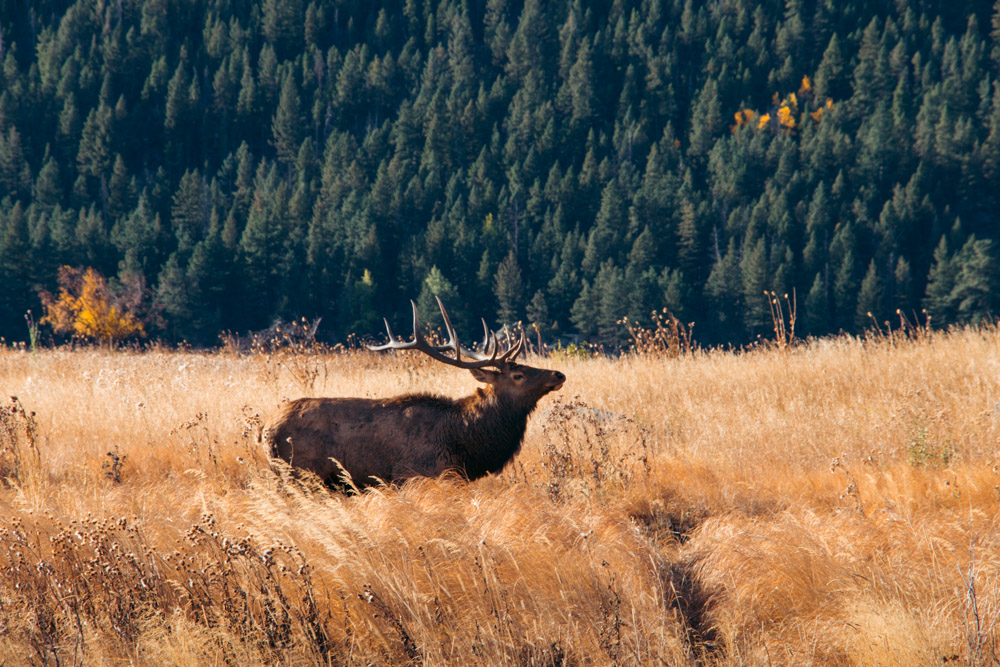
The Best Spots to See and Photograph Wildlife in Rocky Mountain National Park
We saw bison in Yellowstone National Park, deer in Grand Teton National Park, bears in Glacier National Park. These animals can be found anywhere else in the country. But the above mentioned national parks are homes to the largest populations of these particular species.
In fact, every government-protected area has its own “reigning king” from the animal kingdom. In Rocky Mountain National Park, elk are the most popular members of local wildlife.
Although the antlered wild animals prevail, they don’t dominate the area. A prime destination in the USA to watch wildlife, Rocky Mountain National Park is home to almost 60 species of mammals and nearly 300 species of birds. Even one reptile, the harmless garter snake, hides in the dense forest of the Colorado’s Rockies.
What Animals and When to Watch and Photograph in Rocky Mountain National Park
Rocky Mountain National Park abounds with wildlife. Yet only several species are easy to spot. The majority of local wild animals prefer to keep out of sight.
Unbothered and unnoticed, they feel less threatened and carry on with their regular foraging/hunting lifestyles. Some of the likeliest members of Rocky Mountain National Park’s wildlife to spot and photograph from a distance include the following:
Elk
Elk is one of the sought-after animals in Rocky Mountain National Park. The graceful antlered mammals roam the entire region. In summer, elk tend to move to higher elevation. Alpine tundra along Trail Ridge Road becomes their primary feeding location.
Your chances of spotting and photographing large gangs of these animals at lower elevation increase in the fall, winter, and spring. As food sources deplete in the alpine region, elk congregate near meadows and valleys at the feet of the mountains.
Mule Deer
Like elk, mule deer are common in Rocky Mountain. You can spot them anywhere in the park. In fact, you don’t need to drive deep into the forest or up the mountains to photograph the mule deer.
Famous for their large ears, the wild animals often linger near main roads and the Beaver Meadows Entrance, located on the east side of Rocky Mountain National Park.
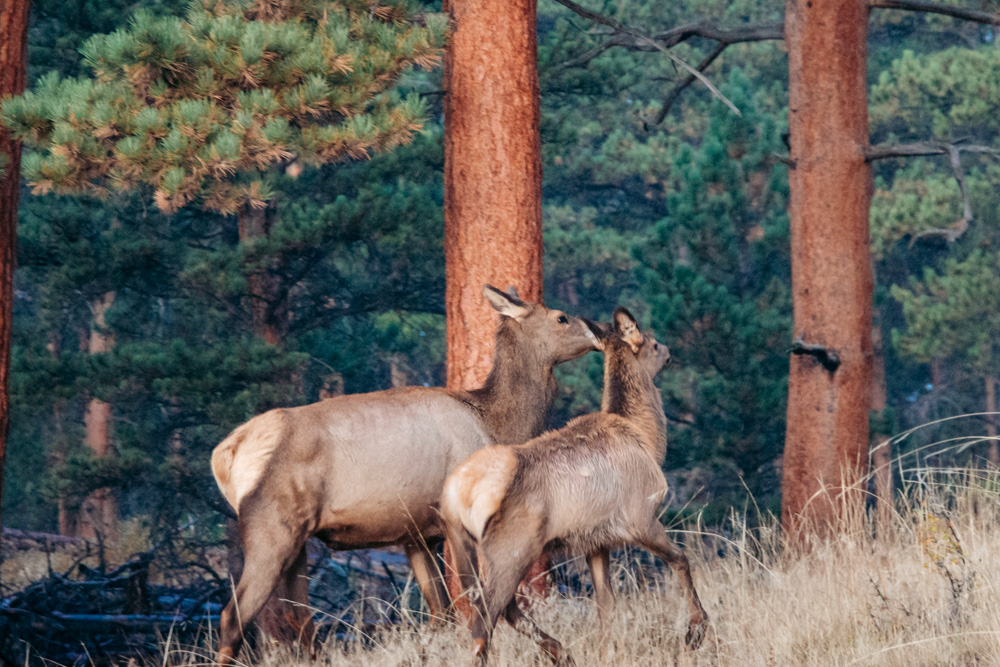
Marmots and Pikas
These representatives of local wildlife stick to rocky areas where they can hide and munch on flowers and grasses.
It’s quite easy to spot pikas along some forested trails. Photographing the quirky wild animals can be a more difficult task. These mountain-dwelling mammals are just too fast. Luck is on the side of those wildlife photographers that persevere, set up tripods, and wait for the wild animals to visit their hidden locations.
Bighorn Sheep
If you desire to see no other wildlife but bighorn sheep, head over to Glacier National Park, not Rocky Mountain. The chances of seeing these wild animals increase tremendously in the northern areas of the West Coast.
With that said, you can still find and even photograph bighorn sheep, known for their distinct large horns, in Rocky Mountain National Park. In the summer, these animals normally roam near lakes located around mountainous cliffs.
Moose
Larger animals in Rocky Mountain National Park follow similar patterns. In the summer, when the alpine tundra revives from the long winter hibernation and fills up with lush vegetation, the broad-antlered wild animals move to higher elevations.
With the arrival of the colder seasons, the moose migrate back to the meadows and lakes at the bottom of the mountains.
Bears
You may think that the Bear Lake Corridor is the likeliest place in Rocky Mountain National Park to spot and snap a few pictures of these alluring and frightening members of local wildlife. That could be possible a century ago when both grizzlies and black bears abounded. No grizzlies inhabit the park today.
The black bear population is also small. Rocky Mountain National Park is home to about 30 of them. So, being a minority, the wild animals don’t look for trouble. They prefer the most secluded areas – far away from people – where the bears forage mostly for berries.
TIP: If you happen to encounter a black bear in Rocky Mountain National Park, grab small children and dogs and try to back slowly. The wild animal will most likely run away. But you can never be sure. So precaution is necessary.
READ MORE: How to Protect Yourself from Bears in the Wild: Tips and Myths
Mountain Lions
These members of Rocky Mountain’s wildlife are dangerous hunters. They move slowly through the forest and attack their prey unexpectedly. Observing and photographing these animals as they hunt is almost impossible.
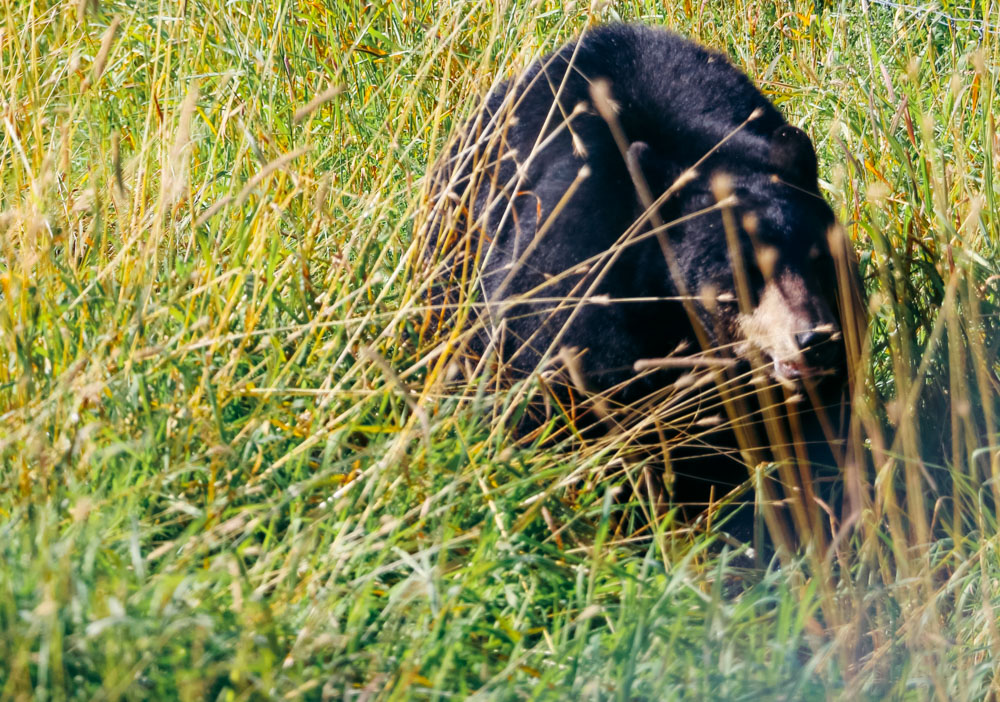
WHERE TO LOOK FOR AND PHOTOGRAPH WILDLIFE IN ROCKY MOUNTAIN NATIONAL PARK
1. Moraine Park
Located in the eastern corner of Rocky Mountain National Park, Moraine Park is one of the most reliable places to spot antlered wildlife. As the temperatures drop, elk migrate back to lower elevation. Moraine Park is where they stay during the fall rutting or mating season.
A wide meadow with a dense forest in the background is the primary location to watch and, I can attest to it, photograph wildlife in Rocky Mountain. Oblivious to spectators lining up the side of the road, the wild animals graze on the now yellow field.
A few brave males often separate from the group and get closer to the road, presenting excellent photo opportunities for Rocky Mountain’s wildlife photographers. The wild animals normally don’t get too close to pose any threat to the observers.
2. Cub Lake Trail
Some antlered members of Rocky Mountain’s wildlife stray farther away from the herd. In search of the greener grass, they roam near the Cub Lake Trailhead. Now they are the “owners” of the hike.
I don’t think any visitors of Rocky Mountain National Park, especially those with special photo gears, ever mind it. The hikers are safe here as long as they keep a distance and don’t approach any wild animal regardless of its size.
Along the virtually flat section of the Cub Lake Trail that runs along the meadow, you can also spot white-tailed ptarmigans. The small grouse are not show-makers. They stick to the areas with tall grass that hide them from both human visitors and carnivorous members of Rocky Mountain National Park’s wildlife.
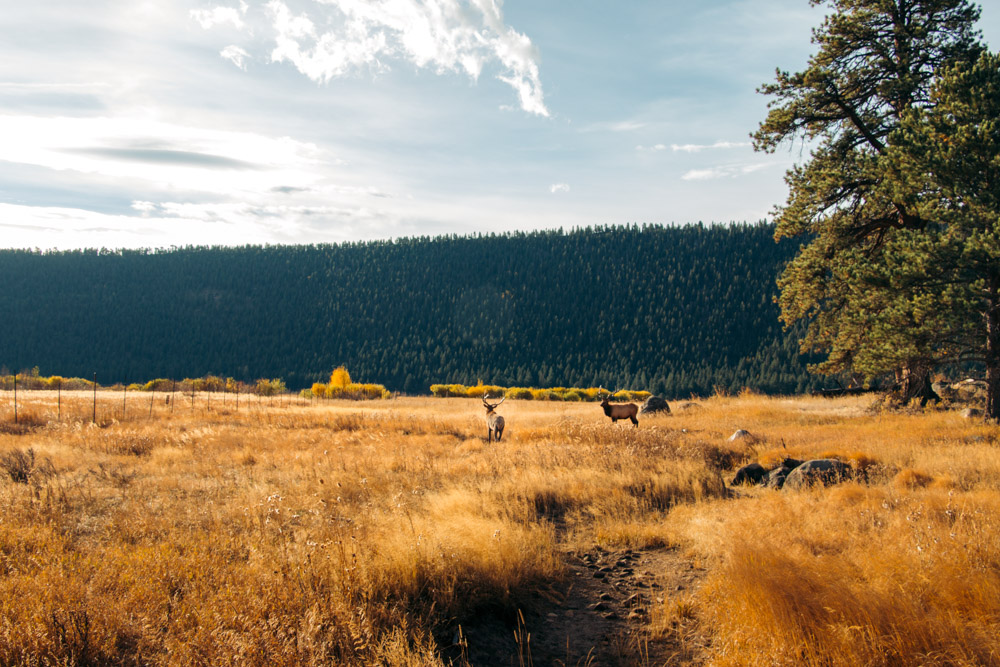
3. Estes Park
There are some obvious similarities between people and Rocky Mountain’s wildlife. Both look for the “greener grass”. And the turf is surely greener on thoroughly watered lawns in the small town of Estes Park. Known as a gateway to Rocky Mountain National Park, the place sits roughly 4 miles from the Beaver Meadows Entrance.
Elk and occasional bears that help themselves from unlocked trash cans visit Estes Park. Some representatives of antlered wildlife are regular here. Locals say they are normally nonaggressive, but you should still keep a safe distance.
You know for sure that an elk is in the town when a long line of cars blocks the road for no apparent reasons. At one point, we had trouble getting into a tiny parking lot of our roadside hotel. When it was finally our turn to get into the driveway, the reason for that mysterious traffic jam was sitting right in front of our hotel window.
The antlered beast was the sight to behold all day long. The next morning, I opened the window, secretly hoping to see our wild “guest” before we drove back to Rocky Mountain National Park. The elk was gone, or at least I thought so.
As it turned out later, the animal relocated to the farther fence where it was joined by another antlered member of local wildlife.
Note: You will most likely have similar encounters with wild animals in the town of Banff in Banff National Park, Canada. Home to the Canadian Rocky Mountains, the area is famous for black bears, elk, moose, bighorn sheep, and many others.
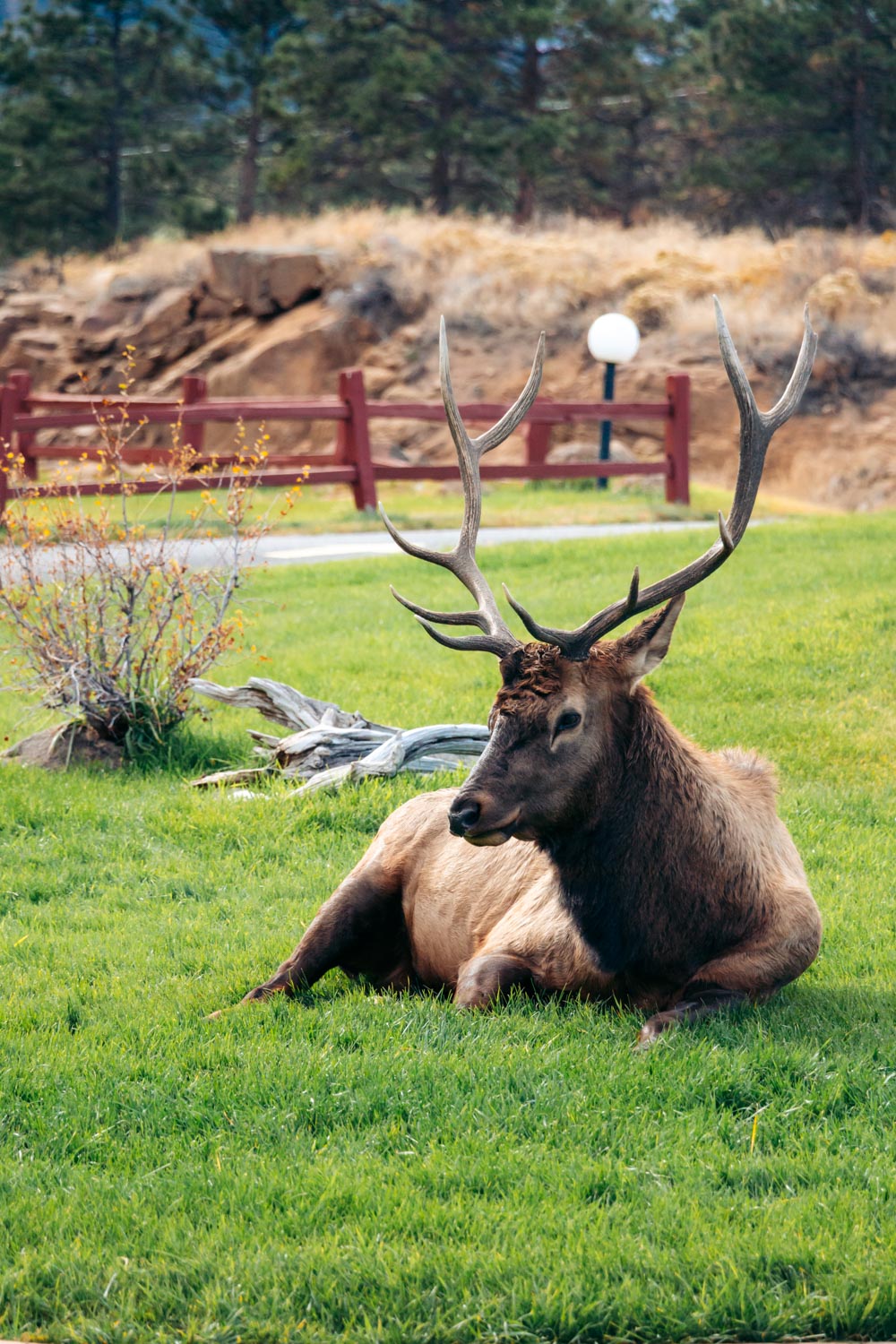
4. Horseshoe Park and Upper Beaver Meadows
If relatively unpopular Moraine Park still feels too crowded for your ideal wildlife watching experience, head over to Horseshoe Park or Upper Beaver Meadows.
Both areas are nestled in the eastern section of the national park. And both of them boast wide meadows that allure elk, returning from the higher elevations. The best time to watch antlered wildlife in this section of Rocky Mountain National Park is during the rutting season, from mid-September through October.
5. Kawuneeche Valley
Located on the west side of Rocky Mountain National Park, the Kawuneeche Valley is home to different species of wildlife. Here you can spot elk, humpbacked moose, and spindly-legged deer.
Moose normally narrow their feeding areas, sticking mostly to groves along the Colorado River. The river itself is a primary territory of wild otters. These animals, however, are some of the most elusive members of Rocky Mountain National Park’s wildlife.
6. Harbison Meadow and Holzwarth Meadow
If you see a large meadow that meets the forest, set up your tripod and wait for wildlife to appear.
Harbison Meadow and Holzwarth Meadow, both located in the western section of the park, are two areas that follow this rule to a T. Elk frequent this region, offering a plethora of unique opportunities for wildlife photographers to get those up-close shots.
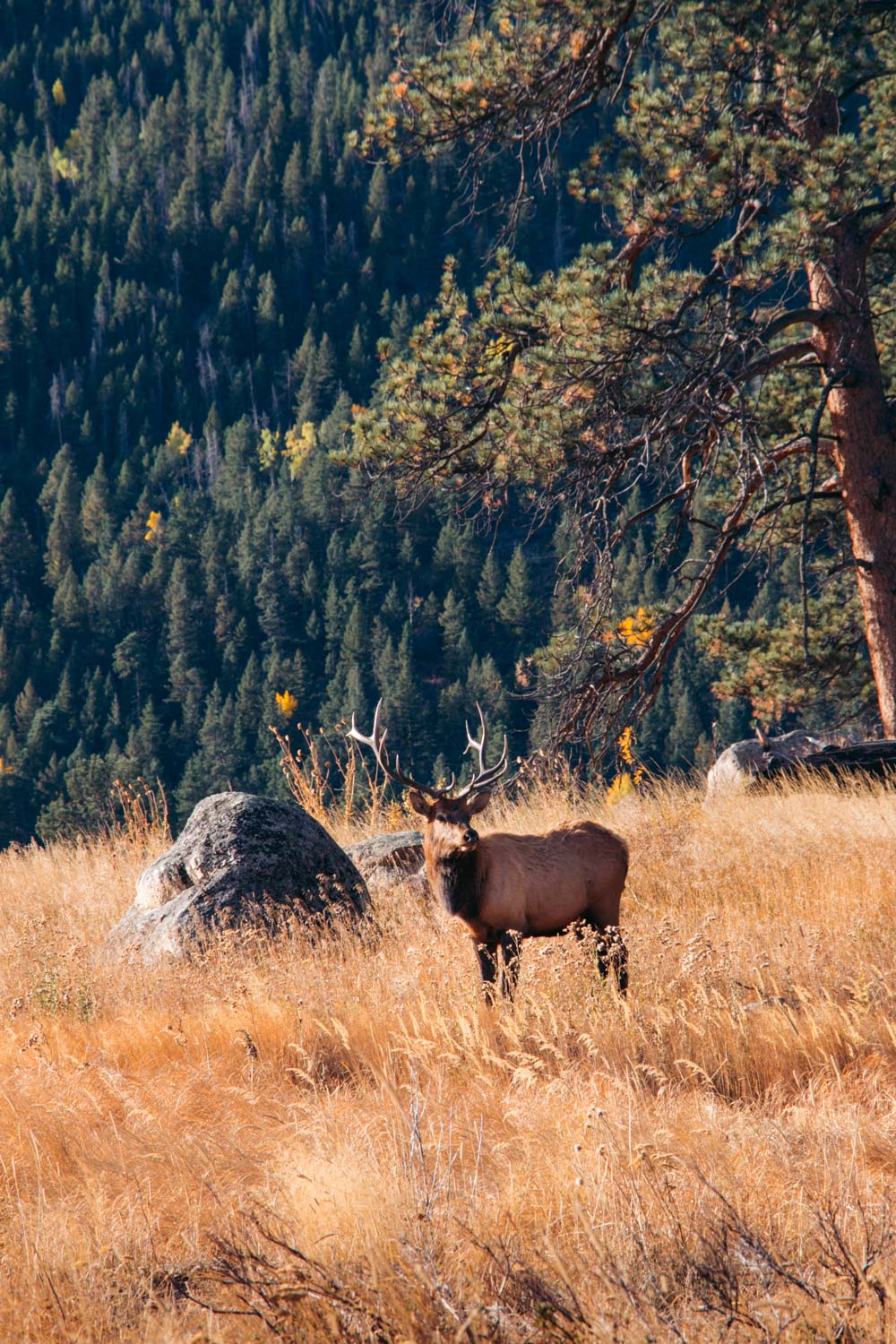
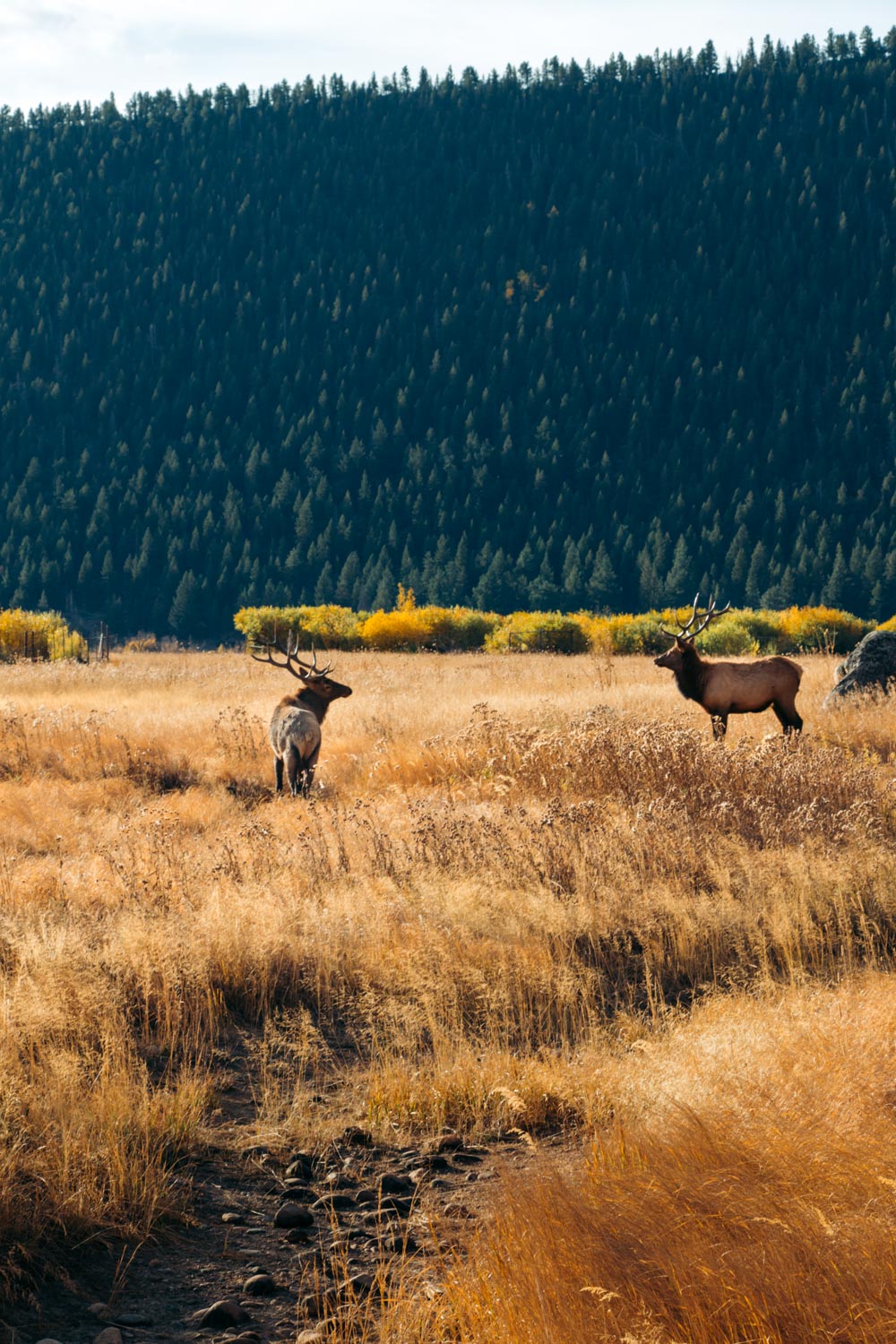
7. Sheep Lakes
The name gives it away, doesn’t it? Sheep Lakes, nestled a short drive from the Fall River Entrance, are indeed a great place to watch and photograph bighorn sheep.
These members of Rocky Mountain National Park’s wildlife are famous for their large, curving horns. They normally roam in the steep mountainous habitat that protects them from predators. From May through mid-August, the bighorn sheep are a common sight around Sheep Lakes.
8. Old Fall River Road
Old Fall River Road is a seasonal section of Rocky Mountain National Park. This mostly gravel, 11-mile route is located up in the mountains, near Horseshoe Park. It’s open for vehicles from early July through early October.
And while you drive along the mountainous road, admiring the beauty around you, don’t forget to slow down. Bighorn sheep and marmots may be looking suspiciously at the passing-by cars from their hideouts scattered along the route.
9. Trail Ridge Road
The Trail Ridge Road area is a harsh alpine realm, covered with snow most of the year. Only a few species of Rocky Mountain National Park’s wildlife can survive here all year round. In late spring when the snow retreats and the corridor reopens for vehicles, elk return to the alpine tundra.
Along with them reappear marmots, bighorn sheep, golden eagles, Clark’s nutcrackers, and Steller’s jays. The most skilled wildlife photographers can even spot such elusive birds as white-tailed ptarmigans while hiking on the alpine tundra.
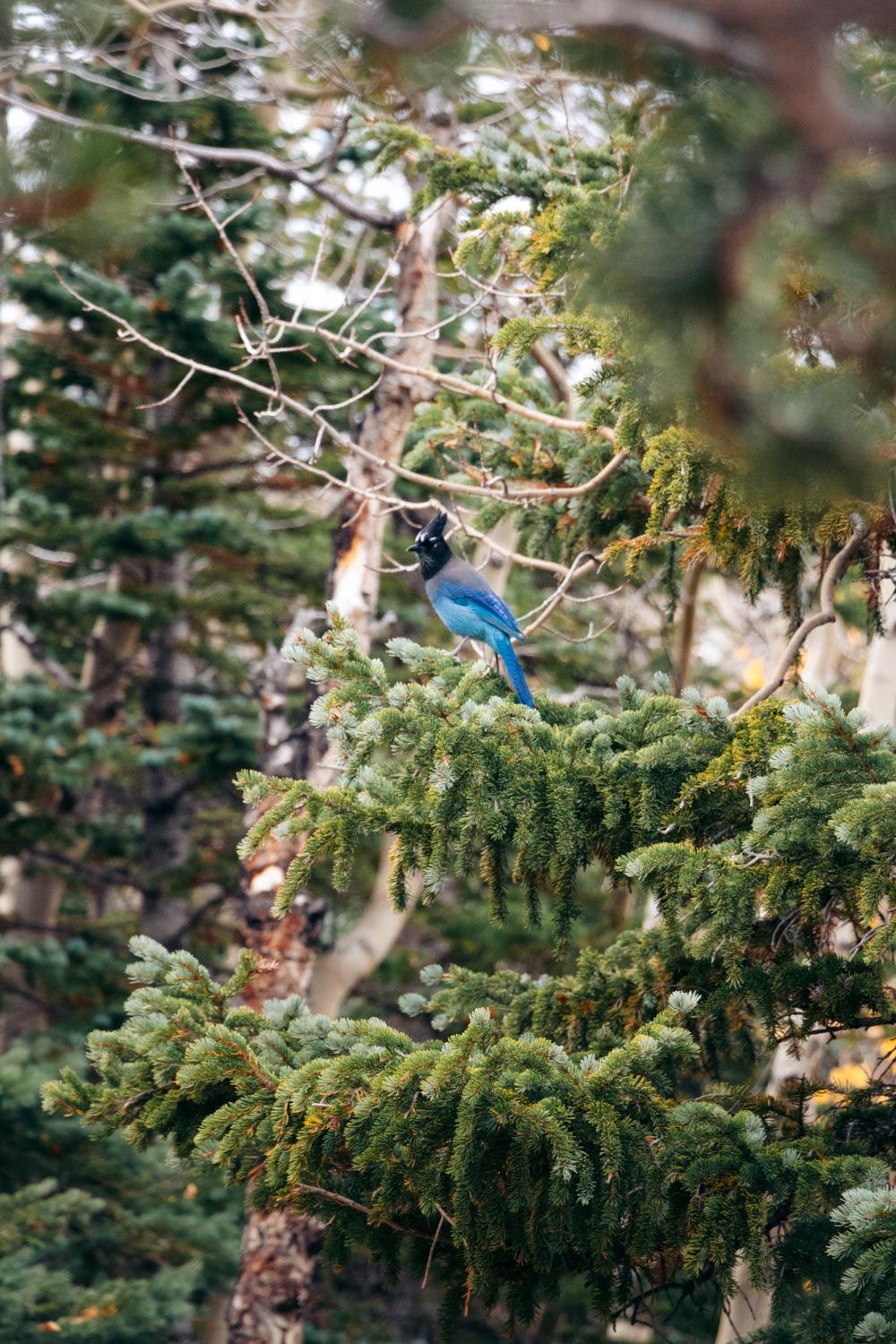
10. Alberta Falls Trail
Blue-tailed Steller’s jays are present along the Alberta Falls Trail. Oblivious to the hikers, the birds jump on the ground, fly from one branch to another. Never too far… As if teasing you. As if trying to say, “Look, I’m here. Take a picture.”
11. Sprague Lake
We left Sprague Lake for the end of our fall visit to Rocky Mountain National Park, jam-packed with hikes and wildlife watching activities. As fate would have it, apart from human visitors – many of them – no wild animals dared to share the trail with us.
Mid-September through October, however, is the likeliest time to find moose, roaming in the forest nearby or stopping at Sprague Lake to satisfy their thirst. The wild animals are rather selective with their drinking time. Staying away from human visitors of Rocky Mountain, park’s wildlife normally approaches the lake at dawn or dusk.
The Best Places to Watch and Photograph Wildlife in Rocky Mountain National Park: Map
Tips for Watching and Photographing Wildlife in Rocky Mountain National Park
1. Arrive at Dawn or Dusk
Early morning hours or late evenings increase your chances of spotting many species of wildlife in the Rocky Mountains. For better images, be sure to arrive hours before wild animals get out of their hideouts. Set up your tripod and wait. Sometimes it takes hours for wildlife to appear, other times – only a few minutes. Your patience will be rewarded eventually.
2. Keep Distance
This rule is repeated again and again by every ranger you meet, by every article about wildlife and the best places to watch and photograph the wild animals. There must be a reason for it. Wild animals are wild creatures that can be unpredictable and dangerous.
So, a general rule of thumb is to watch elk and bighorn sheep from a distance of at least 75 feet (23 meters). Moose, black bears, and mountain lions have to be observed and photographed from even farther away, 120 feet (36 meters).
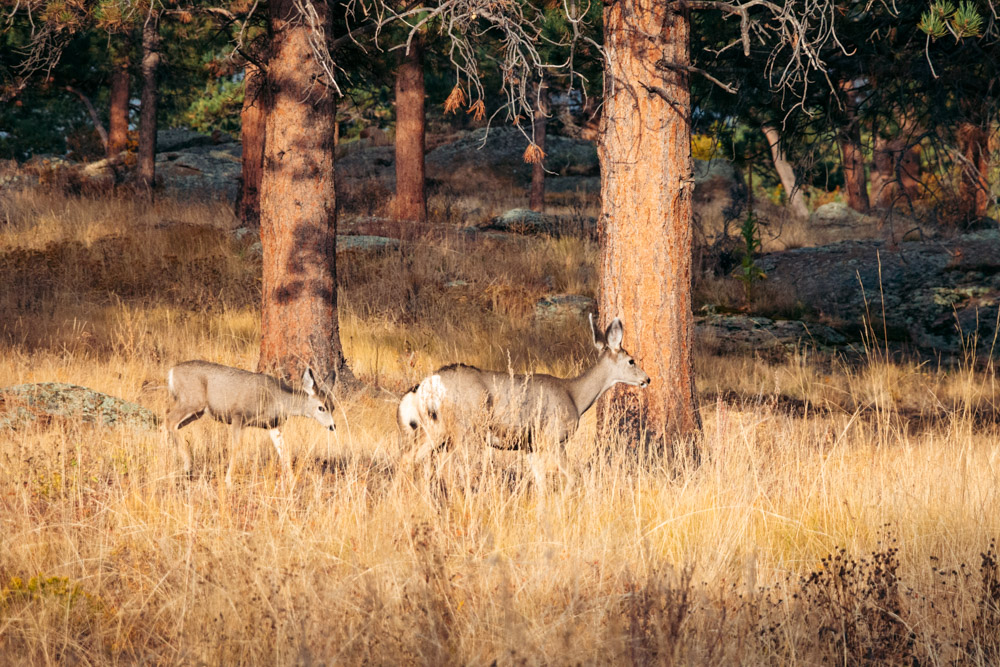
3. Bring Telephoto Lens or Binoculars
These gears allow you to see wild animals in detail from afar. A telephoto lens is especially recommended for stunning, close-up photos of Rocky Mountain’s wildlife.
4. Be Quiet
Looking for and photographing wildlife is almost never a fast-paced activity. Patience is required. Thus, you may even want to grab a thermos with hot coffee or tea and a folding chair. Then perch comfortably on the side of the road, like wildlife lovers in Moraine Park do, and wait for Rocky Mountain’s “locals” to surprise you.
5. No Feeding Wild Animals
Feeding or otherwise attracting wildlife to get a better look or photo is prohibited in Rocky Mountain National Park and any other national parks.
Feeding the animals messes up with their natural behaviors. The wild creatures stop foraging and start panhandling for food. Some of these animals become especially aggressive – it often happens with bears – and must be removed from the park or killed.
Read Next
- MASTER YOUR PHOTOGRAPHY SKILLS: 10 Travel Photography Mistakes to Avoid
- INTERVIEW WITH A PHOTOGRAPHER: Photography, Travel, and Day Job with Anna Cossack
- SAFARI EXPERIENCE: 7 Lesser-Known Safari Destinations Outside of Africa